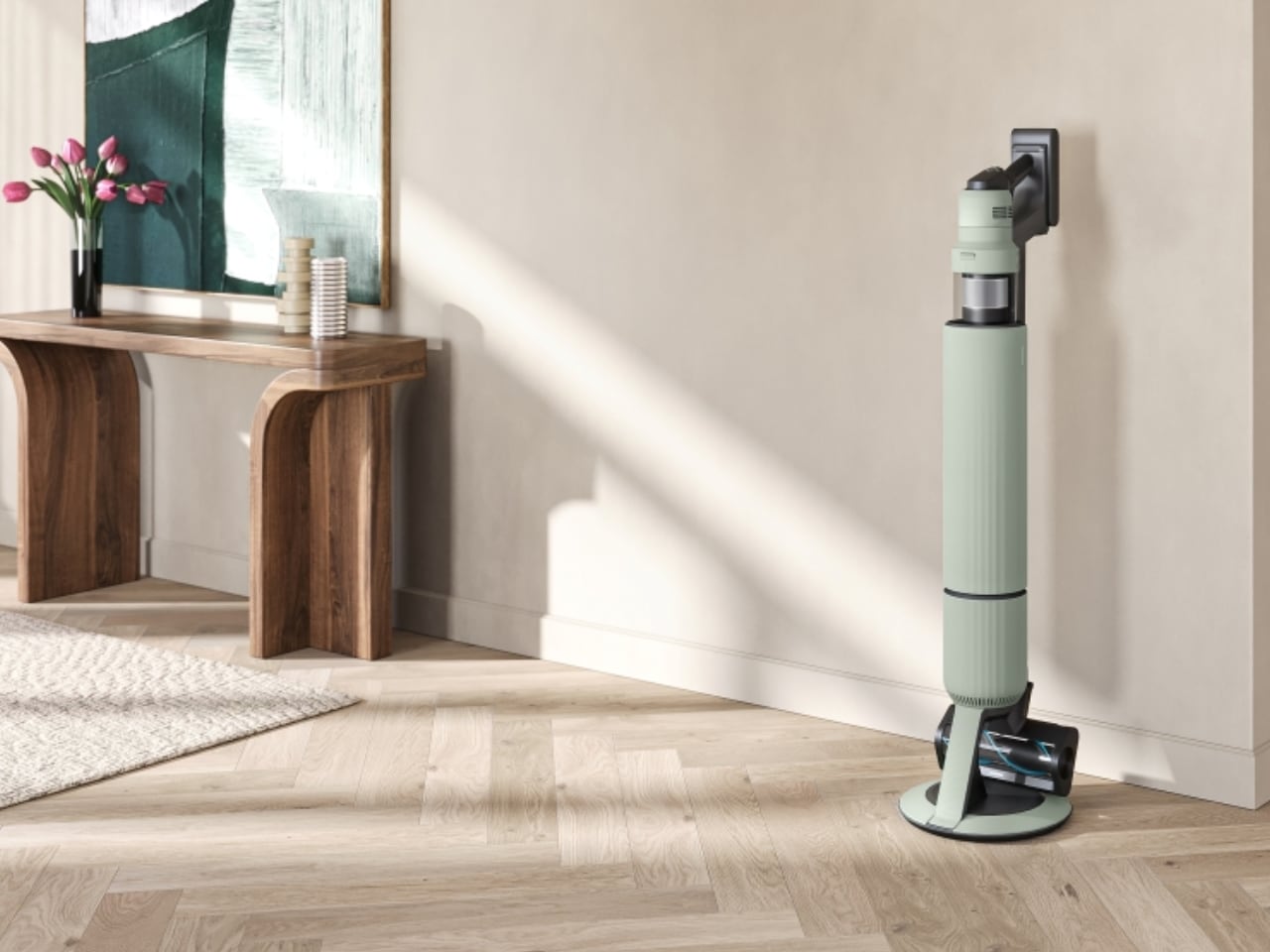
Samsung has introduced a new flagship cleaning device that has caught my attention with some remarkable technical specifications. The Bespoke AI Jet Ultra enters the high-end vacuum market with performance metrics that, if they hold up in real-world testing, could represent a significant advancement in cordless cleaning technology. As someone who’s tested countless vacuums over the years, I’ve learned that manufacturer specifications often require a healthy dose of skepticism.
Power claims, in particular, need careful examination since raw suction doesn’t always translate to superior cleaning performance.Designer: SamsungWhat makes this announcement particularly interesting is the specific metric Samsung is highlighting: 400W of suction power. This figure represents a significant leap beyond what we’ve seen in the cordless vacuum space and warrants a closer look at what it might mean for real-world cleaning performance.

The power comes from Samsung’s new HexaJet Motor, which utilizes a hexagonal stator structure and optimized airflow design for maximum efficiency. While impressive on paper, the true test will be how this translates to actual cleaning capability across different surfaces and debris types.Battery life has long been a limitation for cordless vacuums, but Samsung appears to have made substantial progress here.
The Bespoke AI Jet Ultra comes with two batteries – a 100-minute large-capacity option and a 60-minute lightweight alternative – providing up to 160 minutes of combined runtime. This far exceeds the typical 60-minute maximum found in most premium cordless models. Samsung also claims the batteries will retain 70% of their performance after 500 charging cycles and backs them with a 2-year warranty.
Filtration also receives significant attention, with Samsung implementing a multi-layered HEPA system that captures 99.999% of particles as small as 0.3μm.
This level of filtration would make it particularly suitable for allergy sufferers and pet owners concerned about airborne particles. The system is designed to minimize dust recirculation, a common issue with less sophisticated vacuum designs.Samsung’s emphasis on “AI cleaning” appears more substantial than I initially suspected.
The AI Cleaning Mode 2.0 can detect six different cleaning environments through brush load and air pressure sensors, automatically adjusting suction power and brush speed accordingly. This includes differentiating between carpet types and recognizing when the vacuum is cleaning corners.
Samsung claims this intelligent power management reduces battery consumption by 21%.The vacuum includes a cleaning station for hands-off dust collection – a feature we’ve seen in previous Samsung models that eliminates one of the less pleasant aspects of vacuum maintenance. Additional accessories include an Active Dual Brush designed specifically for carpets and a Slim LED Brush+ for corners and hard-to-reach areas.
An LCD display provides notifications and settings control, giving users visual feedback on the vacuum’s operation. This kind of interface has become increasingly common on premium vacuums, though its practical utility varies depending on implementation.The Bespoke AI Jet Ultra launched globally on March 31, 2025, as part of Samsung’s expanded 2025 Bespoke AI Home Appliances lineup.
The vacuum integrates with Samsung’s broader AI Home ecosystem, connecting with other SmartThings-enabled appliances for what the company describes as seamless smart home management.With a retail price of $1,099 (£1,119), it positions itself firmly at the premium end of the cordless vacuum market. This represents a significant investment for most households, comparable to high-end models from Dyson and other premium brands.
The question consumers will need to answer is whether the claimed performance advantages justify this substantial price tag.Jeong Seung Moon, Executive Vice President of Samsung’s Digital Appliances R&D, has positioned the vacuum as building on the UL-verified Bespoke Jet AI legacy, calling it a “game changer” for smart home cleaning. While executive statements naturally tend toward hyperbole, the specifications do suggest Samsung has made meaningful technical advances.
While Samsung’s technical specifications are impressive on paper, the true measure of any vacuum is its real-world cleaning performance across various surface types and debris conditions. Many factors beyond raw power affect cleaning efficacy – brush design, airflow patterns, maneuverability, and ease of use all play crucial roles. Previous Samsung models have demonstrated strengths in effortless gliding and deep cleaning capabilities, but they’ve faced stiff competition from brands offering similar features at lower price points.
The vacuum cleaning market has seen numerous innovations that looked impressive in marketing materials but failed to deliver proportional improvements in actual cleaning performance. While high suction power is important, it is just one element of effective vacuum design. The way that power is channeled through the cleaning head and how effectively the brush engages with different surfaces often matters more than raw suction numbers.
For now, Samsung’s new cordless vacuum represents an intriguing development in the space – one that could potentially reset performance expectations if the real-world results match the specifications. But as with any cleaning technology, the proof will be in the performance, not the numbers. Until independent testing confirms how these impressive specifications translate to cleaning effectiveness, the bold technical claims remain exactly that – claims waiting for validation.
The post Samsung’s New Bespoke AI Jet Ultra Pushes Cordless Vacuum Boundaries first appeared on Yanko Design..















